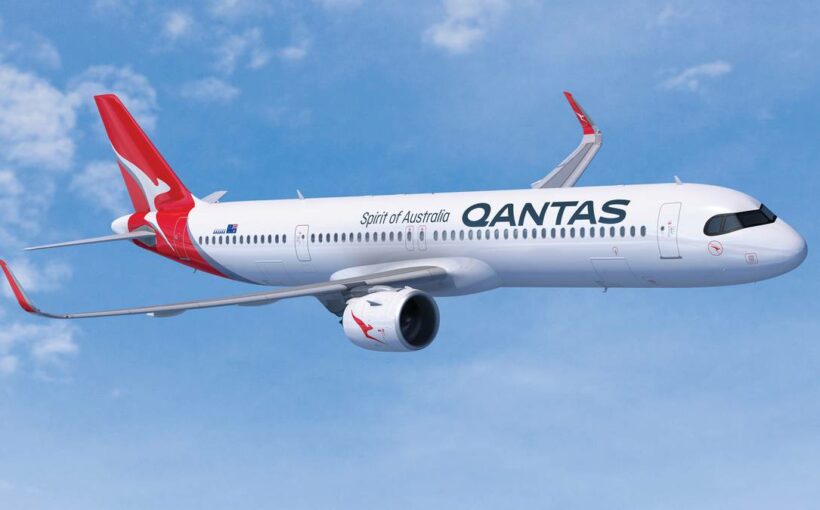Qantas is upbeat about the current financial year despite the growing Omicron outbreak around the world and says it is concentrating on flying its way back to recovery.
It has also announced what could turn out to be the biggest aircraft order in Australian history as it switches its single-aisle fleet from Boeing to Airbus.
Growing travel demand is underpinning continued recovery, which is forecast to result in capacity in the lucrative Australian market exceeding pre-Covid levels and international capacity back to 40 per cent or better by the end the financial year.
Qantas Group chief executive Alan Joyce said the airline had reached the end of a very difficult year but borders were reopening and staying open.
“The big thing for us in 2022 is that we’ll only focus on cashflow-positive flying – for us [it] is not about making money, it’s about getting people back to work, generating positive cashflows and repairing our balance sheet,” he said.
About 11,000 jobs had been reinstated.
While the recent boost in travel activity has partially offset the material impact from months of lockdowns, the group expects significant loss in the first half of the year.
Assuming no further lockdowns or significant travel restrictions, Qantas expects an underlying EBITDA loss in the range of A$250 million (NZ$264m) to A$300m.
Once non-cash depreciation and amortisation costs are included, the underlying EBIT loss is expected to exceed A$1.1 billion.
The group expects to incur additional ramp-up costs in the second half of the 2022 full year. This reflects the decision to return all Australian-based employees to work earlier than expected and ahead of demand to ensure capability is maintained, and to end a long stand down period for employees.
Australian state borders were opening in spite of Omicron infections increasing and by early February internal travel would be the same as it was pre-pandemic. Despite soaring case numbers in New South Wales and Victoria, Joyce said state premiers had committed to staying open when vaccine targets had been reached and Australia would “get on and live with the virus”.
While there had been some pause in international bookings, there was still strong interest in visiting friends and relatives and everyone on Qantas planes had to be fully vaccinated, and on most routes must have passed a Covid test.
“It’s still an unbelievably safer environment to travel.”
Joyce said the emphasis needed to be on hospitalisations rather than case numbers.
“The news of the Omicron variant had a clear impact on people’s confidence to book international trips in particular, but we haven’t seen large numbers of cancellations. Many customers have strong intentions to travel if the border and quarantine settings are right and in the past few days we have seen intakes improve.”
Big flight to Airbus
The airline has also announced a commitment to buy 40 new Airbus narrow-body aircraft in addition to the 100 A320s that Jetstar has on order.
Qantas will also have a further 94 purchase right options on aircraft over a 10-year-plus delivery window as it phases out it existing Boeing 717s and the 737-800s used domestically and for transtasman flying. Joyce said the aircraft on international routes would have cabin features not seen before.
Part of this new deal includes combining these two orders so Qantas Group can draw on a total of 299 deliveries across both the A320 and A220 families over the next decade and beyond. Once finalised, this will represent the largest aircraft order in Australian history.
Qantas said it moved quickly to take advantage of the faster-than-expected reopening of international borders into New South Wales and Victoria. Routes to London, Los Angeles and Singapore restarted in November.
But over the past month, the grouphas adjusted the restart timing for some routes, including Japan, New Zealand, Hong Kong and Shanghai in response to extended border restrictions in those countries. The return of Sydney-San Francisco and Brisbane-San Francisco have been paused.
Due to these and other smaller adjustments, the return of the group’s international capacity has been slowed by about 10 percentage points in the second half of the financial year and is now expected to be at the bottom end of the previously quoted 40-55 per cent of pre-Covid levels.
Source: Read Full Article

/cloudfront-ap-southeast-2.images.arcpublishing.com/nzme/ZQ6YNW6IX4FBIGLIX4HNNZIWMU.jpg)
/cloudfront-ap-southeast-2.images.arcpublishing.com/nzme/YQWQJVBWFR4YZCCXQLTXET4R3U.jpg)